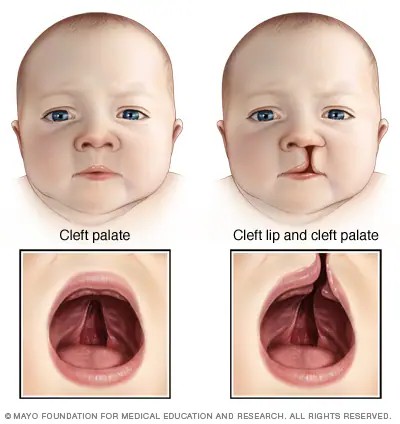Cleft Palate
A split in the roof of the mouth that develops in the womb

What is a Cleft Palate?
A cleft palate is a rift in the hard palate in the mouth, and can be caused by genetic and environmental factors [1]. This causes the air in the nose and mouth to mix, which can lead to atypical teeth placement, as well as difficulties swallowing and speaking. Over two thousand babies are born with cleft palate every year in the U.S. [2].
One of the speech impediments that can occur due to a cleft palate is velopharyngeal insuffiency (VPI), which can lead to hypernasality. Hypernasality is caused by an excess amount of air leaving through the nose when someone speaks, which distorts their speech [3].
How is a Cleft Palate Treated?
Most children born with a cleft palate undergo surgical repair to seal the tissue within 18 months after birth [4], with many children requiring further surgical care later in life. Speech therapy is commonly used to address hypernasality and other resonance disorders post-surgical repair. This care can continue into early adulthood (~21 years old).
 NasoCoustics
NasoCoustics